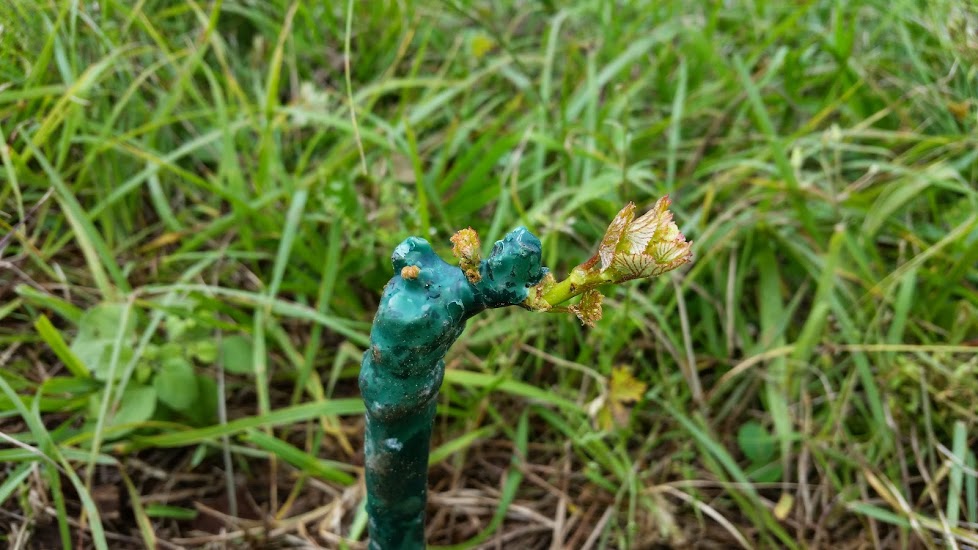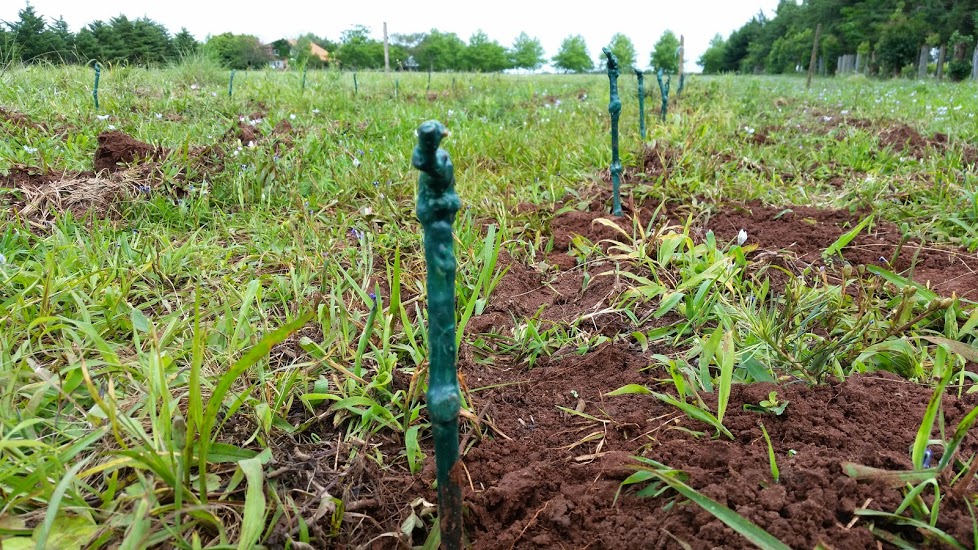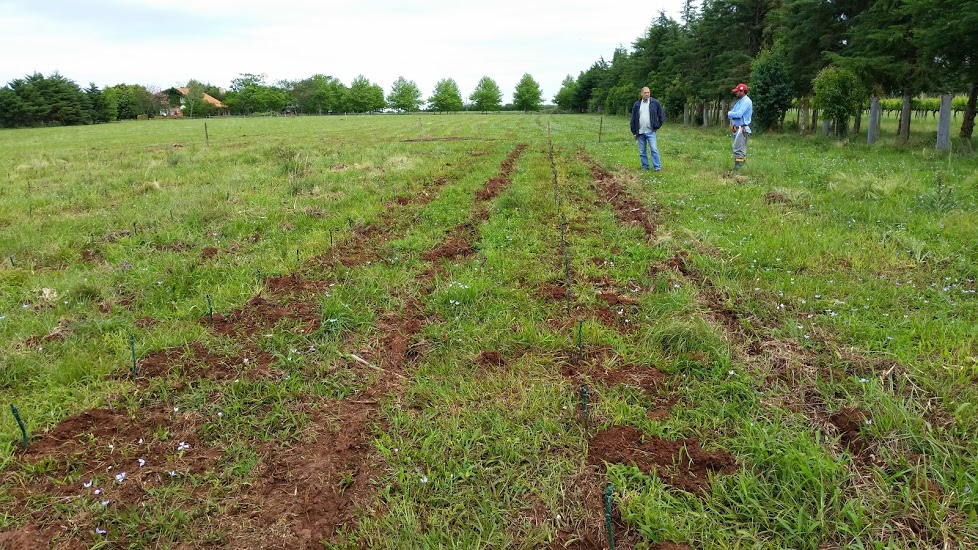One sip of Sigalas Santorini Assyrtiko altered James Carl’s life path. Three years ago, the acupuncturist in the Brazilian state of Rio Grande de Sul knew little about wine. A budding interest in winemaking led him to start studying catalogs and scientific articles on grape varieties. James’ interest was soon drawn to indigenous varieties from Greece, Georgia and Portugal. It was during this period that he sampled the aforementioned Sigalas wine. “The Assyrtiko wine took my heart and carried my soul to Santorini” he says. The desire to cultivate Assyrtiko and other rare Greek grape varieties in Brazil never left him since this day.
James continued his research and exchanged correspondence with Greek producers and grapevine nurseries. He began forming a network of people who know about wine and grapes, always on the lookout for a partner who might be able to bring his vision alive. He finally met José Ayub, the owner of the Campos de Cima winery, through a mutual friend who works at the Brazilian Agricultural Research Corporation (Embrapa).
The Campos de Cima property is located in the far south of Brazil, in the Campanha Gaúcha region near the borders with Argentina and Uruguay. It has remained in the Ayub family for more than 150 years. The main agricultural and livestock products in the area were rice and cattle. In the late 90s, José and his wife Hortência started exploring what other products might adapt well to the climate and soil at the farm, in order to diversify their production. Among other opportunities, they became interested in the vitis vinifera.
They had a good reason for this, as several studies by academic and private entities pointed to real potential in the region for vitis vinifera. Almadén started this process in the 1970s, when investigators from the Californian UC Davis came to Brazil to examine the Gaúcha region. Almadén belonged to Seagram at the time, but was later sold to Pernod Ricard, and finally became a part of Brazil’s Miolo Wine Group.
Campos de Cima entered an arrangement with the Embrapa Uva e Vinhos. The estate became part of a study to see how grapes would develop over the years. 15 ha of land were planted with plants imported from France and Italy between 2002 and 2004. Around the same time, other farmers started planting vines as well. Many wineries from Serra Gaúcha, the largest and most traditional Brazilian wine region, also moved in, planting vines and buying grapes from local producers. Today Campanha Gaúcha is the fastest growing wine region in Brazil, renown for still and sparkling wines.
The Ayub family produced their first wines from their own grapes in 2006, at other wineries. Their brand was then launched and the wines were commercialized in 2009. They started building their own winery in 2012, and this year’s production will take place at the completed estate for the first time. They also hired Michel Fabre, a well known French winemaker who has been assisting them since last year. Michel owns his own estate in the South of France, La Croix de Saint Jean. José Ayub manages the Campos de Cima property, and everything related to the vineyards. His wife Hortência is the owner of the winery business, together with her two daughters Manuela and Vanessa.
The vineyards have an elevation of 180 meters, located in the Pampas. The literal translation of Campos de Cima means ‘upper fields’, as the vineyards and the building are located at the highest place in the property. The dominating climate is very dry and hot during the summer, with temperatures reaching 37˚ C (99 Fahrenheit). The winter is very cold and rigorous, with minimum temperatures around the freezing point for water.
Campos de Cima is a boutique winery with a small production, aiming for high quality wines. When the Ayub family met with James Carl, they quickly understood that they had some very strong common interests: James is interested in exploring Greek varieties; they have the land, the equipment and the experience managing vineyards, and became intrigued in testing Assyrtiko.
James believes that the Campanha Gaúcha region suits Assyrtiko well: “In Brazil, we constantly strive against moisture. For this reason, we want to plant Assyrtiko in a very hot region to prevent fungal diseases. Southern Brazil also has low temperatures in winter, which should guaranty a good dormancy for the grapes.” Pedro Candelária, the Commercial Director and also José’s and Hortência’s son-in-law, adds: “Our first goal is to try Assyrtiko, to see how it suits our terroir. Because of the hot weather conditions during summer, we need grapes with good acidity. If this experiment goes well, we will use Assyrtiko for commercial purposes, either as a blending partner, or even a varietal wine.”
Last week, the planting of 1000 Assyrtiko and 25 Agiorgitiko vines, which were imported from the Italian Rauscedo nursery, was completed at the property. The Agiorgitiko variety is just a small experiment, perhaps some grapes will in the future be used as a blending partner in a planned sparkling rosé wine. There are already plans to add other much rarer Greek indigenous varieties in the coming years. We might well see Mavrotragano, Koniaros, Black of Kalavryta, Limniona and Vertzami being grown at the Campos de Cima vineyards.
Some photos of the freshly planted Assyrtiko vines:




Experiência interessante. Espero que dê certo.